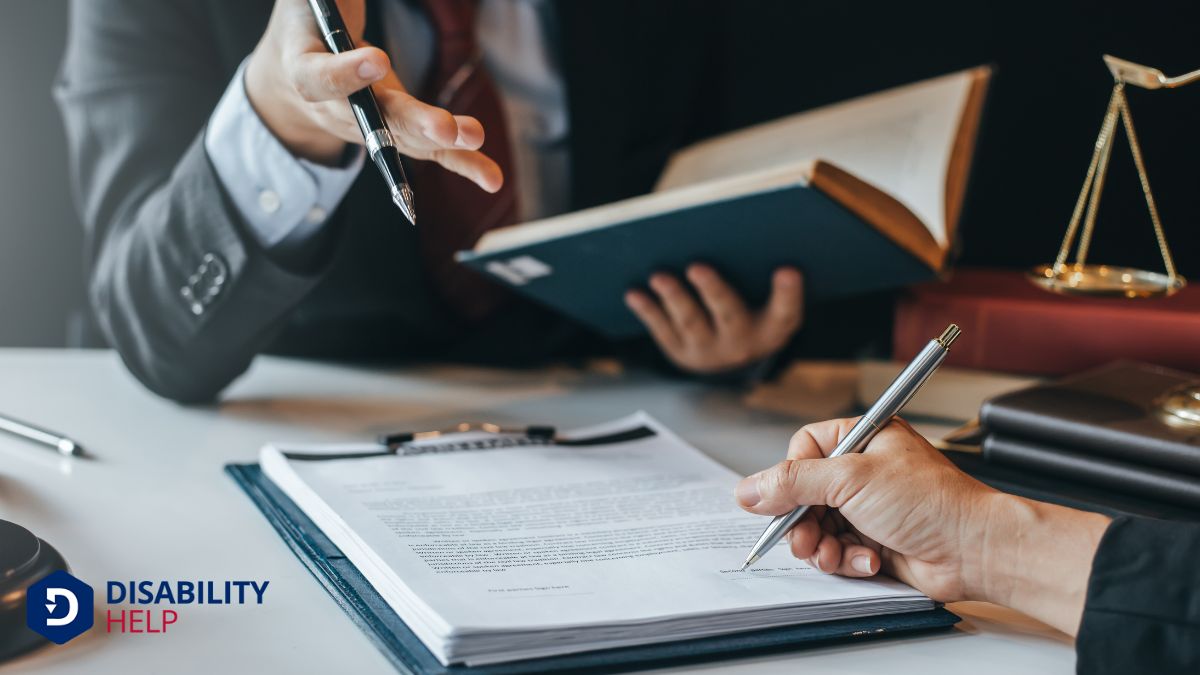When we're in an accident and realize we might be partially at fault, many of us wonder if filing a claim is still an option. Understanding how fault is determined can be complex, but the good news is that comparative negligenceA legal concept where a party fails to exercise reasonable care, resulting in harm to another person... laws often allow us to seek compensation, even if we're partially to blame. However, the extent to which we can recover damages varies by state, and it’s essential to know how these laws might impact our situation.
Key Takeaways
- Yes, you can still file a claim, even if you are partially at fault, depending on state laws.
- Comparative negligence laws allow recovery with compensation adjusted according to each party's fault percentage.
- Gathering evidence like photos and witness statements strengthens your claim when you are partially at fault.
- Understanding your state's specific negligence laws is crucial for determining claim eligibility and potential compensation.
- Legal advice can help navigate claims and maximize potential recovery when partially responsible for an accident.
Understanding Fault in Accidents

When we're involved in an accident, understanding who's at fault is essential for determining liability and potential compensation. Fault indicates who's responsible for causing the accident, and it influences how claims are processed and settled.
To determine fault, we need to evaluate the events leading up to the accident and the actions of everyone involved. Did someone ignore traffic signals or drive recklessly? Analyzing these factors helps establish which party, if any, deviated from expected behavior.
In many cases, the fault isn't clear-cut, and multiple parties may share responsibility. Our goal is to gather all relevant information, including witness statements and police reports, to piece together an accurate picture.
This understanding empowers us to navigate the claims process effectively, ensuring fair outcomes.
The Basics of Contributory Negligence
How does contributory negligence affect our ability to file a claim? In jurisdictions that follow contributory negligence laws, our ability to recover damages can be severely limited if we're partially at fault.
If we share any blame for the incident, even as little as 1%, we mightn't be able to receive any compensation for our injuries or losses. This strict rule means we must prove the other party's complete fault to pursue a claim successfully.
Understanding this concept helps us navigate legal options and make informed decisions. It’s vital for us to gather strong evidence and present a well-prepared case.
Recognizing our responsibility in an accident guarantees we're better equipped to handle the complexities of contributory negligence.
Exploring Comparative Negligence
Unlike contributory negligence, comparative negligence allows us to recover damages even if we're partially at fault for an incident. This concept assigns a percentage of fault to each party involved. Our compensation is then adjusted according to our degree of responsibility.
For instance, if we're 30% at fault, we can still receive 70% of the total damages. This approach recognizes that accidents often aren't entirely one person's fault.
Understanding this can empower us to pursue claims confidently. It's essential to gather evidence, like photos or witness statements, to support our case.
How States Differ in Fault Laws
As we explore how states differ in fault laws, we see that understanding comparative negligence is essential.
Some states apply pure comparative negligence, letting us claim damages even if we're mostly at fault, while others use modified versions with specific thresholds.
Contributory negligence states, on the other hand, can bar us from recovery if we're even slightly responsible for the incident.
Comparative Negligence Explained
When it comes to determining fault in an accident, the concept of comparative negligence plays an essential role in deciding who pays what.
Across different states, the laws vary. Some states follow a "pure" comparative negligence rule, where we can recover damages even if we're 99% at fault. Our compensation is reduced by our degree of fault.
Other states use a "modified" system, allowing claims only if we're less than 50% or 51% responsible, depending on the state.
Understanding these differences helps us know whether we can pursue a claim and what we might expect regarding compensation.
It's imperative to grasp how these rules apply in our state to navigate the aftermath of an accident effectively.
Contributory Negligence Impact
Having explored comparative negligence, we now turn our attention to contributory negligence and its impact across different states. Contributory negligence is stricter; if we’re even slightly at fault, it could bar us from recovering any damages. This approach is applied in a few states, including Maryland and Virginia, where being 1% responsible can mean no compensation.
However, most states have moved away from this harsh rule, recognizing its potential unfairness. As a result, many adopted modified comparative negligence, allowing us to still recover damages if our fault doesn’t exceed a certain threshold, usually 50% or 51%.
Understanding these differences is essential when filing a claim. We must consider where the accident occurred and how that state’s negligence laws might affect our case.
Assessing Your Role in the Accident
Understanding our role in an accident can be challenging, yet it's essential for determining how claims are handled. We need to honestly assess the situation, considering all factors that may have contributed.
Were we distracted, speeding, or perhaps didn't signal when we should have? Each of these actions can influence how fault is determined.
Let's gather all relevant information, like police reports, witness statements, and even photos from the scene. This evidence helps us piece together what happened, allowing us to see our actions' impact more clearly.
Steps to Take When Filing a Claim
Before diving into the claims process, let's make sure we're organized and prepared. First, gather all necessary information, such as contact details of those involved, insurance policy numbers, and a clear account of the incident.
Understanding our policy coverage is essential, so let's review it thoroughly to know what we can claim.
Next, we should promptly inform our insurance company about the accident. This guarantees they can guide us through the process and help us understand any time-sensitive requirements.
When speaking with them, honesty is key—let's clearly explain the situation and our involvement.
Finally, let's be prepared to follow up regularly. Keeping track of communications and any responses will help us stay engaged and make certain our claim progresses smoothly.
Evidence Gathering and Documentation
Gathering solid evidence is essential for a successful claim. When we find ourselves partially at fault, documenting every detail becomes even more significant.
We should start by collecting photos of the scene, capturing angles that illustrate the incident clearly. Witness statements also play a key role, so let's not hesitate to ask for their contact details and written accounts.
Medical records and bills are important, too, as they document the extent of any injuries sustained. Finally, keeping a personal record of events, including dates and conversations, helps us stay organized and credible.
Potential Impact on Compensation
When we're partially at fault, the impact on our compensation can vary greatly, potentially reducing the amount we're entitled to receive.
In most cases, the concept of "comparative negligence" comes into play. This means that our compensation might be reduced by the percentage of fault we bear. For instance, if we're deemed 20% at fault, our compensation could decrease by that amount.
It's essential to understand our state's specific laws as they determine how fault affects our claim. Some states follow a "modified comparative negligence" rule, which might bar us from recovering damages if we're more than 50% at fault.
Being informed about these rules helps us set realistic expectations of what we might receive after an accident.
Working With Insurance Adjusters
Dealing with insurance adjusters can be an important step in the claims process, especially when we're partially at fault. Adjusters evaluate the details of our claims and determine how much compensation we're entitled to receive.
It's vital to provide them with clear, honest information about the incident. We should document everything thoroughly, from photographs of the scene to any communication with other parties involved.
Remember, adjusters aim to resolve claims fairly, but they also work for the insurance company, so they're mindful of costs. Being prepared and presenting facts confidently can help guarantee they understand our perspective.
If they propose a settlement that seems unfair, we mustn’t hesitate to ask questions or request further explanation. Understanding is key.
Seeking Legal Advice and Representation

Why should we consider seeking legal advice and representationThe way people with disabilities are depicted in media, culture, and politics, often influencing pub... when we're partially at fault in an accident? Understanding our rights can be challenging, especially when a fault isn’t entirely on the other party. A lawyer helps us navigate complex legal systems, guaranteeing we don’t miss out on fair compensation.
They’ll evaluate the accident details, clarify liability issues, and determine our potential claim's worth.
Moreover, attorneys can negotiate with insurance companies more effectively than we might on our own. This expertise is vital because insurance adjusters aim to minimize payouts.
Having a legal advocate means we're equipped with the knowledge and support needed to pursue our rights confidently. Seeking representation guarantees we’re not alone in this tricky process, increasing our chances of a favorable outcome.
Conclusion
In maneuvering through the complexities of filing a claim when we're partially at fault, it's vital that we comprehend our rights under comparative negligence laws. By gathering evidence, documenting everything thoroughly, and grasping how our state's laws apply, we can better assess our situation. Let's not overlook the importance of working with insurance adjusters and considering legal advice to guarantee we're maximizing our potential recovery. Together, we can approach this process confidently and effectively.






